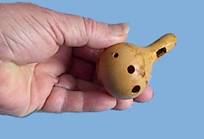Horns and Woodwinds
![]()
Long handled dippers produce tubes that can become woodwinds, reeds and horns.
Horns
Bugle
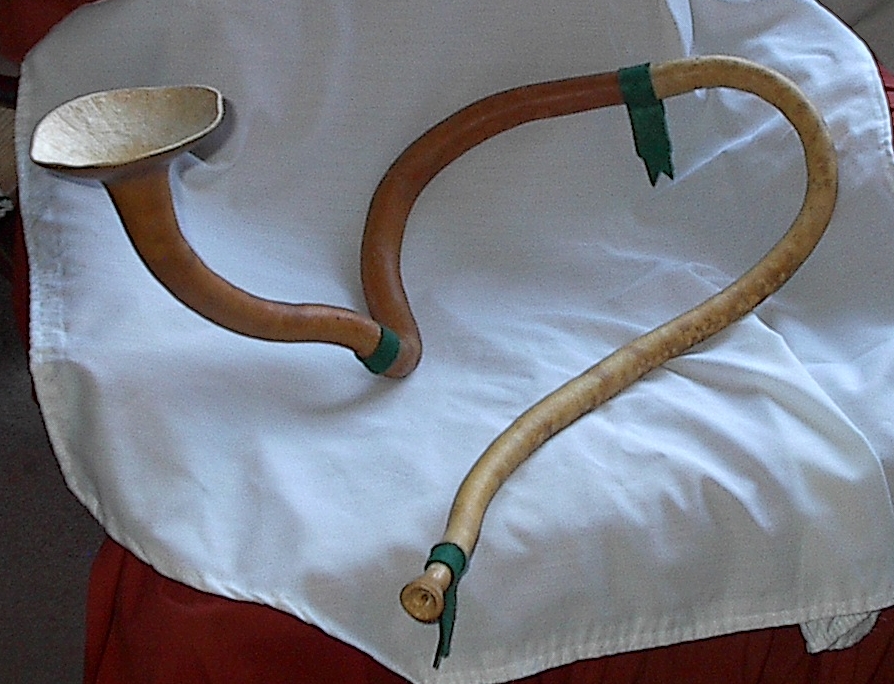
This bugle was made from curved sections of dipper gourds, which were hard to clean inside. Heavy electrical wire can provide the right combination of stiffness and flexibility. The mouthpiece needs to be the same shape as a metal mouthpiece, so copying one works.
Although this sounds like a bugle (played badly, I'm afraid), it looks like a toy. Friends took pity on me and grew some dippers in excellent shapes for a hunting horn:
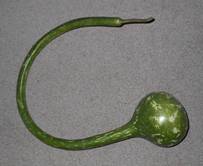
See the section on Growing musical instruments for how they went about it.
These were much easier to clean and look a lot better:
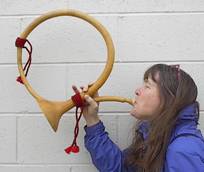
The sound is about the same:

This bugle, shaped as a herald horn, is pure gourd--two long-handled dipper gourds.
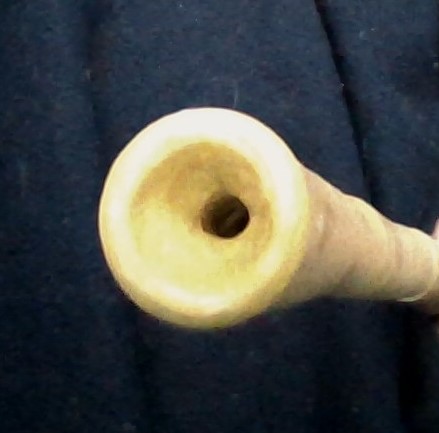
To make the mouth piece, I shaped the spongy material inside the dipper gourd, then poured acrylic paint through it to harden it. I did this twice, shaping the bowl of the mouthpiece roughly, then hardening, then shaping it more finely when it would offer the shaping tool more resistance. The shapers were molded with existing trumpet mouthpieces. Click picture for details.
Alphorn
The alphorn is a very large bugle. This one has 10 feet of tubing and plays in the key of F.

Although all bugles have the same theoretical range, for practical purposes all but 5 notes are too high for a human to make on a standard military bugle. The greater length of the alphorn (twice that of a bugle) puts more of the range within reach. And since the upper parts of the range have the most notes, the alphorn's potential is much richer than the bugle's.
Wondering why there are more notes up high? Imagine that the lowest note has a frequency of 1. Double the frequency to get an octave. The notes that will resonate on a bugle are all the whole number frequencies (the harmonics). So, between 1 and 2 you get no other notes. Between 2 and 4 you get 1 other note. Between 4 and 8 you get 3 other notes, and so on.
Bugles in any size make excellent gourd instruments for the horn player in your life.
Reeds
Reed instruments require more fingers than flutes, so the first one I made, the clarinet below, played just one octave. Then I learned that Brian Wittman figured out how to play one and a half octaves with nine fingers, thus revolutionizing the construction of keyless reed instruments. Using his hole placement scheme, I made the sax, which plays all the notes up to the start of the upper register.
Clarinet
In the instrument-player partnership, this clarinet
does its part well.� The player does less well.� I like this instrument for its deep voice, which you can hear playing backup in the
clarinet/mando combo.
As with the bugle, the
mouthpiece needs to be right, and the way I did them both was to buy a cheap
(<$10) mouthpiece online and use it as a model.� The reed sits flat on the
mouthpiece, which is shaped to match its edge, everywhere except the end, where
the mouthpiece falls away about 0.19 inch starting 5/8 inch from the end.

Saxophone
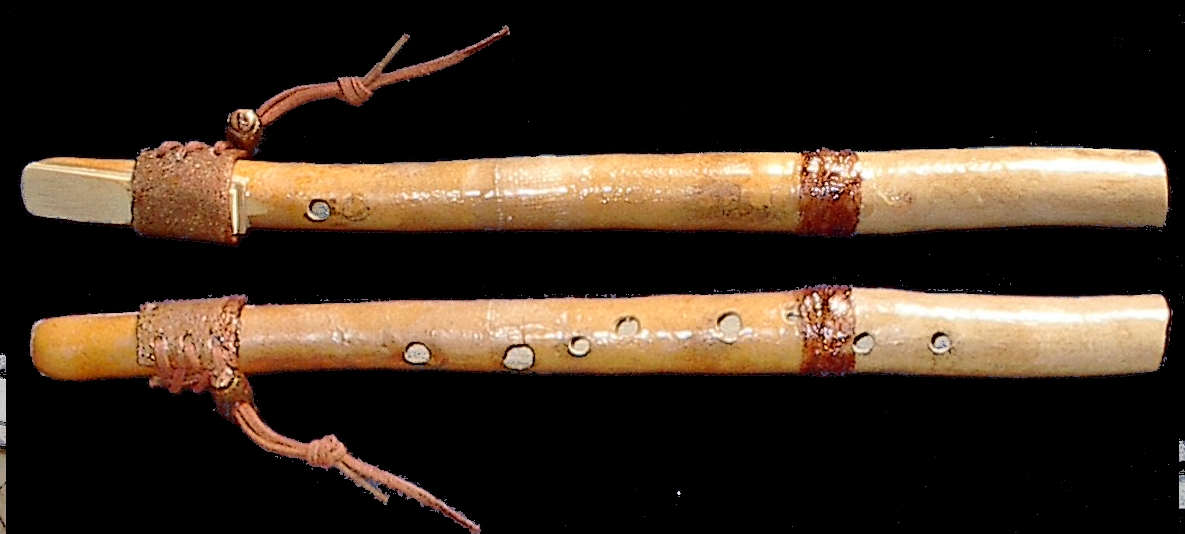
This sax will do jazzy things like bending notes, but I've just given you a straight piece here, not being a jazz musician. It uses an alto-sax reed. I cut a piece of card-stock into the right shape to seal the edge of the reed, and glued it to the gourd after I had formed the drop-off at the tip. This meant I only had to get the gourd part of the mouth piece perfect in one dimension, with the shape below the card-stock being good enough to support it.
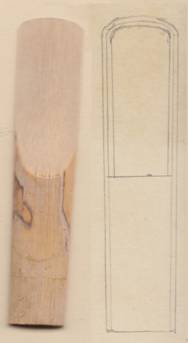
Flutes
Tansverse Flute
![]()
The flute above was very easy to make.� If you don't already play flute, start practicing on empty soy-sauce bottles.� This one was custom made for my hands, which are old and gnarly.� Gourds are great for that.
Penny Whistle
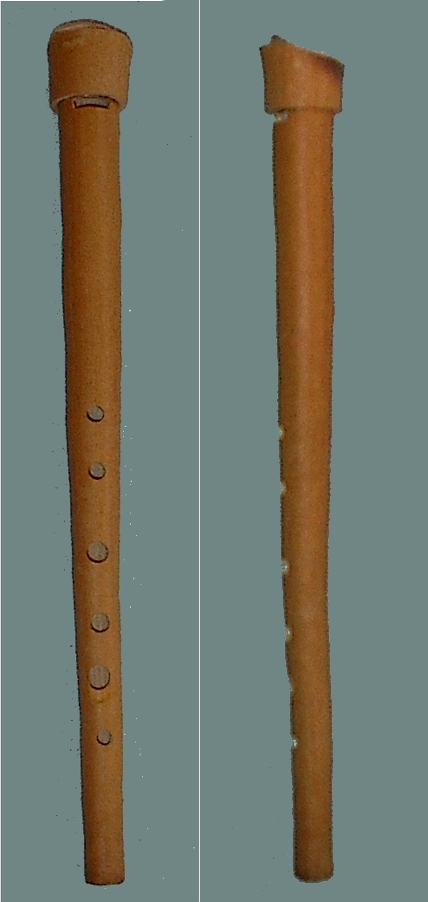
I expected to be able to make a whistle like a recorder or penny whistle, with the sharp edge of the fipple on the inside of the tube. I couldn't make that work, so this one has the sharp edge on the outside.
The large tube that makes the airway came from the same dipper gourd as the main part. I used the shoulder of that gourd to cut the end piece because it gives me a bit of inward curve.
On this instrument I learned to use the wide end for the mouthpiece, which was not intuitive for me. I also experimented with much wider tubes but had trouble getting a second octave from them. I suspect that the closer the finger holes are to 1/2 the diameter of the bore, the more accurate the pitch in the second octave. Since a tube more than an inch in (inside) diameter would require half-inch holes, only giants could close them off with their finger tips.
The first mouthpiece I made to this design was hard to align. Eventually, I learned to use a full round for the piece that makes the airway (rather than the half-round required for air control). I made two tiny holes in this outer tube, put pins through them, then pressed the pins home while blowing on the mouthpiece to make sure it was in position to sound good.
People often ask me how I know where to put the sound holes. In this case, I wanted the fingering to be that of a penny whistle, so I put them in the same positions (proportionate to the length of the tube) as on other penny whistles. You tune each note by starting with a small hole and enlarging it until you get the right pitch.
Xun
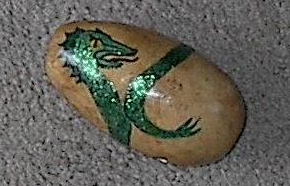 listen
listen
The Xun is a Chinese vessel flute.� This one is made from an egg gourd.
You can hear how much lower its range is than the much-longer transverse flute.� The recording is each instrument's lowest note.�����������

Ocarina
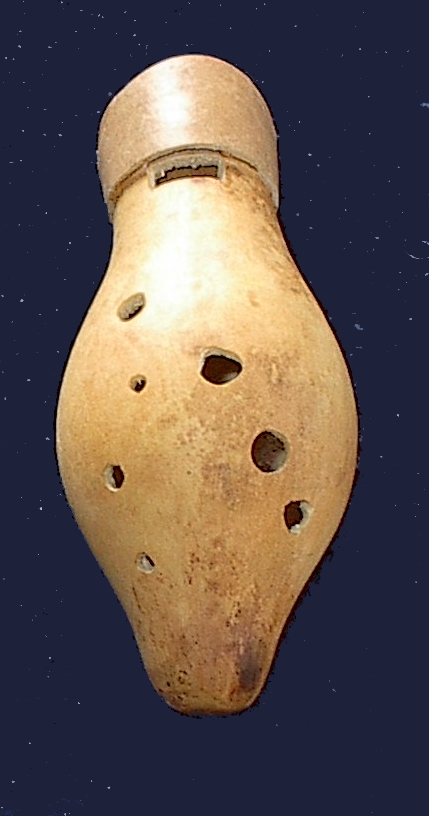 listen
listen
The ocarina is a vessel flute with a whistle moutnpiece.
Last but not least
This tiny vessel flute made itself while I was trying to make into something else.
